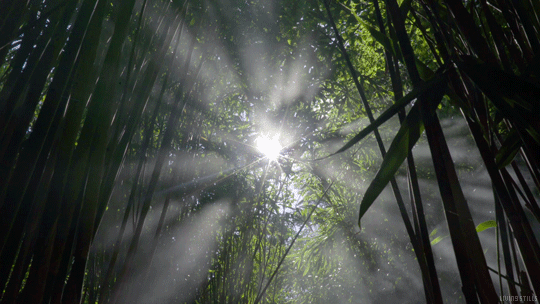From planetsave.com
With a higher compressive strength than brick, concrete, or wood, and a tensile strength that rivals steel, bamboo’s utility as a lightweight building material has been known for thousands of years. Now, researchers at the University of Pittsburgh, Pennsylvania, hope to cement the role of this versatile grass species as a sustainable and environmentally friendly building product for the future for emerging economies around the world.
Bamboo has been used for a diverse range of purposes for millennia—as a building material, a food source, and as a raw material for numerous products, from toothpicks to tissue paper. With more than 1,000 documented uses, bamboo can be employed to make flooring, baskets, boats, bridges, kitchen utensils, charcoal, furniture, roofing, and water pipes, and is even used in traditional medicine. Among the earliest recorded uses, the Chinese utilized bamboo as a medium for written documents in about 1250 BCE, while American inventor Thomas Edison made the first light bulb filaments from carbonized bamboo.
“There's a reason it has survived 2,000, 3,000, 4,000 years as a building material,” said Kent Harries, associate professor of civil and environmental engineering at the University of Pittsburgh who is studying the plant. “Because it works.” (Trib Live)
Bamboo also scores well on the environmental front. As a renewable resource that requires relatively little energy to grow, it can prevent soil erosion and be used as a source of biomass. Bamboo produces more oxygen than other plants and absorbs a higher quantity of carbon dioxide, and where timber forests typically take 25 years to mature, the first harvest from a bamboo plantation can usually be taken in 3–5 years.
Harries is sharing a US$300,000 grant from the National Science Foundation, a US government agency that supports research and education in science and engineering, with fellow researchers at Britain’s Durham University, and the University of Puerto Rico at Mayaguez. The funding will allow them to fully explore and test bamboo’s mechanical qualities and potential as a building material under scientific conditions. A key consideration in this procedure is using the data as a basis for the creation of international standards—one factor that has slowed the adoption of bamboo in modern structures has a lack of formal standards and codes.
The largest member of the grass family, species of bamboo are native to all continents except Antarctica and Europe, with most species found in Southeast Asia and Latin America. In recent years, attempts have been made to grow bamboo on a commercial basis in east-central Africa, especially Rwanda, and the United States.
Harries noted that bamboo is often more accessible to communities in remote parts of the world than more conventional building materials, and performs better in earthquakes and other natural disasters. “The neat thing about bamboo is nature has optimized it,” said Harries, noting that bamboo stalks have a higher concentration of fibers on their outer edges compared with the inside, offering a grater structural strength. (Trib Live)
In May this year, researchers from 17 countries gathered in Pittsburgh to attend a “Symposium on Bamboo in the Urban Environment,” where academics, architects, and engineers discussed the critical role that bamboo could play as a resource for safe, affordable housing and a key contributor to greener urban environments worldwide. The gathering resulted in the “Pittsburgh Declaration,” which supports the development of bamboo as a sustainable and engineered alternative construction material.

“The Pittsburgh Declaration clearly demonstrates a growing consensus among experts on the need to harness bamboo as a building material,” says Oliver Frith, global program director of the International Network for Bamboo and Rattan, a multilateral organization with 41 member states. “Bamboo is a practical, cost-effective, and sustainable option that will provide affordable, and . . . resilient and secure homes. The recommendations included in the declaration are an important milestone and offer a framework to ensure the plant plays a more significant role in construction.” (Phys.Org)